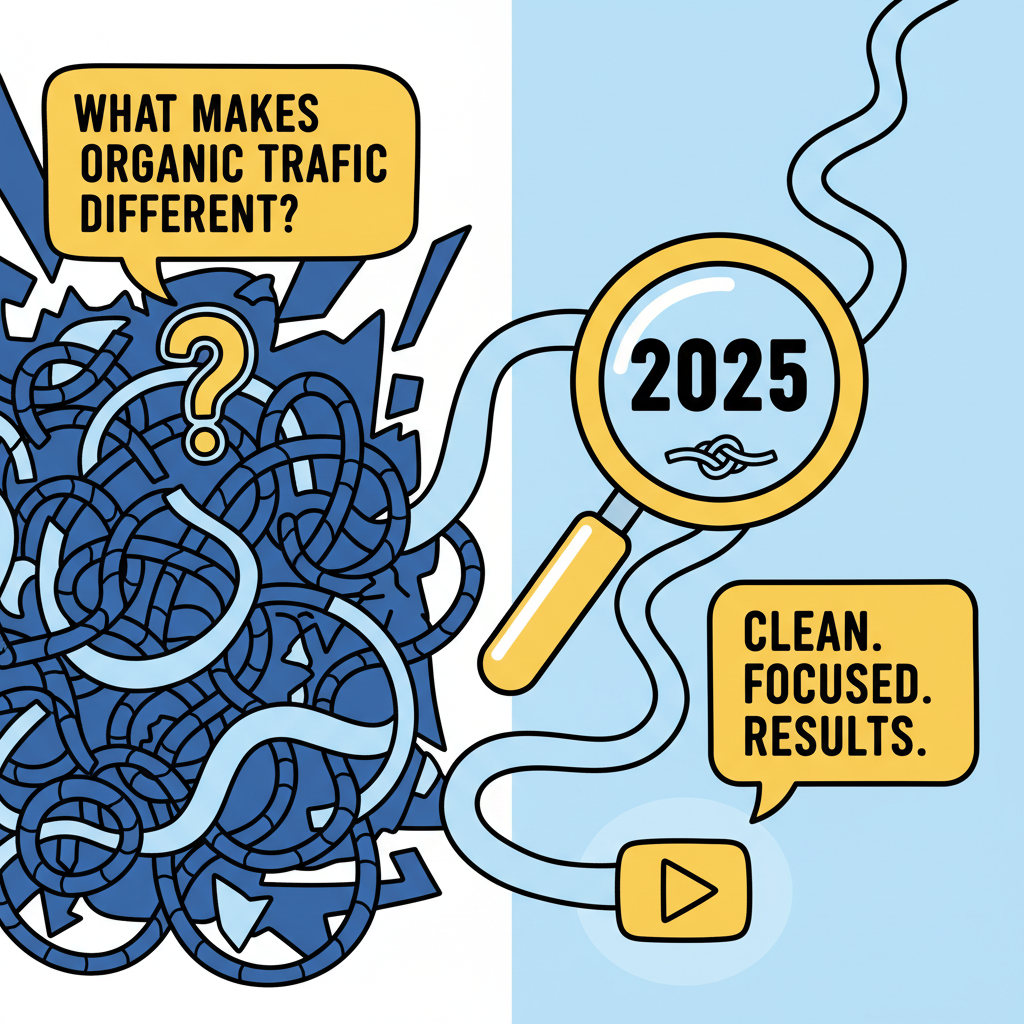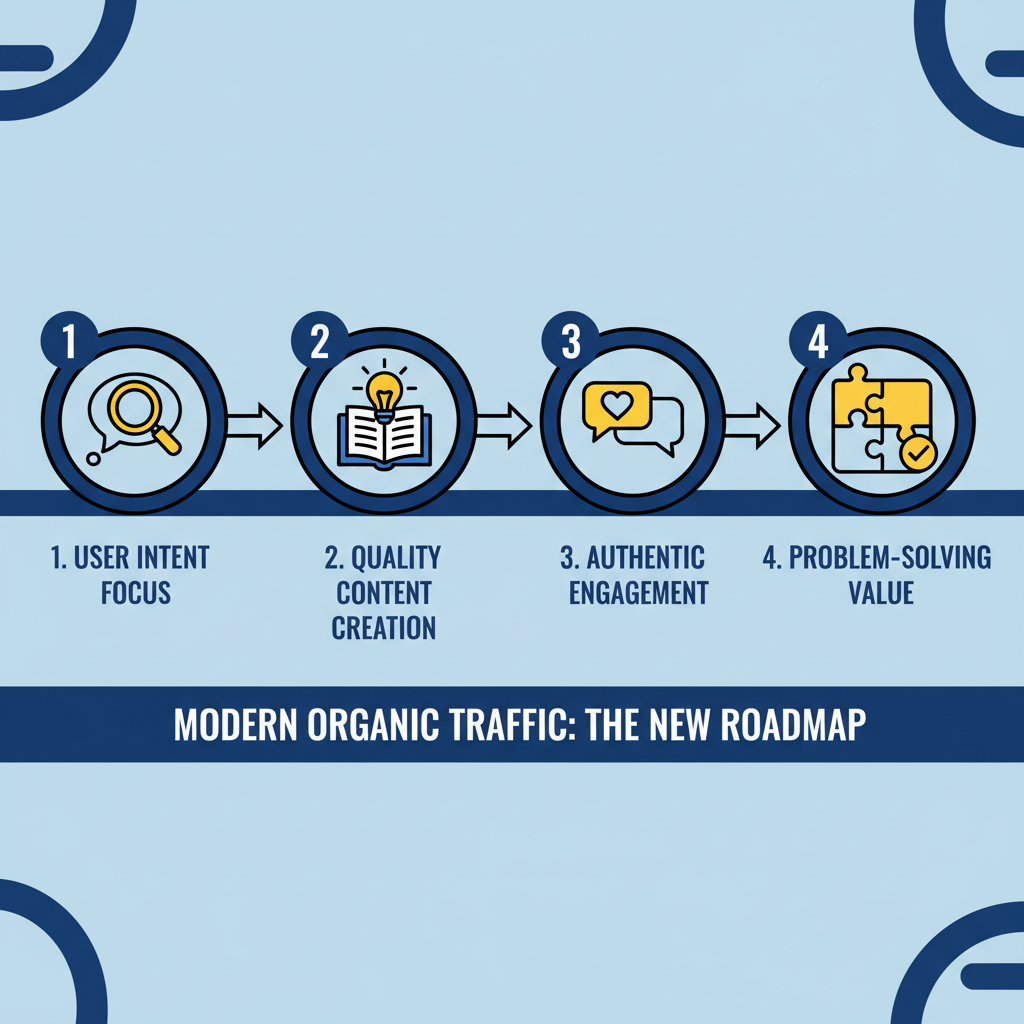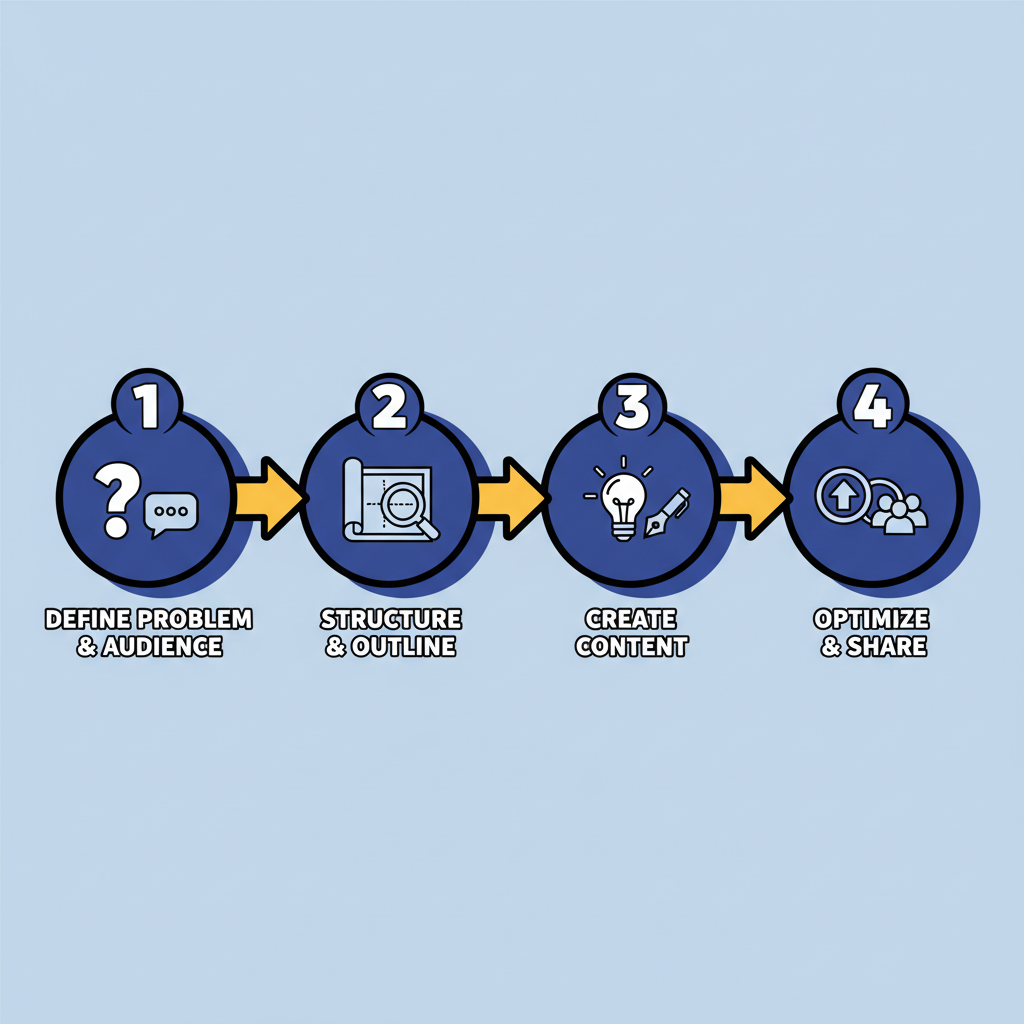What Makes Organic Traffic Different in 2025?
Posted by
How to Build Organic Traffic That Actually Converts: Your Complete 2025 Roadmap

Building meaningful organic traffic isn't just about getting more visitors to your website. It's about attracting the right people who are genuinely interested in what you offer and ready to take action. With search algorithms becoming increasingly sophisticated and user expectations at an all-time high, 2025 demands a strategic approach that goes beyond basic keyword stuffing and outdated tactics.
This comprehensive guide will walk you through proven strategies to build sustainable organic traffic that not only grows your visitor numbers but actually converts into real business results. You'll discover actionable techniques that work in today's competitive digital landscape.
What Makes Organic Traffic Different in 2025?

The organic traffic landscape has evolved dramatically. Search engines now prioritize user intent, content quality, and authentic engagement over traditional ranking factors. This shift means that successful websites focus on solving real problems rather than gaming the system.
Modern organic traffic strategies center around understanding your audience's search behavior and creating content that matches their specific needs at different stages of their journey. Google's algorithm updates continue to reward websites that demonstrate expertise, authority, and trustworthiness through valuable content and positive user experiences.
The key difference in 2025 is that organic traffic success requires a holistic approach. It's not enough to optimize individual pages. You need to create an interconnected content ecosystem that guides users naturally from discovery to conversion.
How Do You Research High-Converting Keywords for Organic Growth?
Effective keyword research forms the foundation of any successful organic traffic strategy. Start by identifying search terms that indicate buying intent rather than just high search volume. Look for keywords where users are actively seeking solutions, not just browsing for information.
Use tools like SEMrush, Ahrefs, or Google's Keyword Planner to analyze search intent behind different queries. Focus on long-tail keywords that reveal specific user needs. For example, instead of targeting "SEO tools," consider "best SEO tools for small business websites" or "affordable SEO audit tools."
What Questions Are Your Target Customers Actually Asking?
Dive deep into the questions your potential customers ask at different stages of their journey. Use platforms like Answer The Public, Reddit, and industry forums to discover real conversations around your topic. This research reveals gaps in existing content and opportunities to create genuinely helpful resources.
Pay attention to the language your audience uses naturally. Often, the most valuable keywords aren't the ones with the highest search volume but the ones that perfectly match how your ideal customers think and speak about their challenges.
How to Create Content That Search Engines and Users Love?

Creating content that ranks well and converts requires balancing search engine optimization with genuine user value. Start every piece of content by clearly defining what specific problem you're solving and for whom.
Structure your content with clear headings, short paragraphs, and logical flow that makes it easy for both search engines and users to understand your main points. Understanding what it really means to improve SEO involves creating content that serves your audience first while following technical best practices.
| Content Type | Primary Purpose | Conversion Potential | SEO Value |
|---|---|---|---|
| How-to Guides | Education & Problem-solving | Medium | High |
| Product Comparisons | Decision Support | High | High |
| Industry News | Authority Building | Low | Medium |
| Case Studies | Trust Building | High | Medium |
| Tool Reviews | Purchase Intent | Very High | High |
What Technical Elements Make Your Content More Discoverable?
Technical optimization plays a crucial role in organic traffic success. Ensure your content loads quickly, displays properly on mobile devices, and includes proper schema markup to help search engines understand your content context.
Optimize your title tags and meta descriptions to clearly communicate value while incorporating your target keywords naturally. Internal linking between related pieces of content helps search engines understand your site structure and keeps users engaged longer.
How Do You Build Authority That Drives Sustainable Traffic?
Building domain authority requires consistent effort across multiple areas. Focus on creating comprehensive resources that other websites want to reference and link to naturally. This approach generates the high-quality backlinks that signal expertise to search engines.
Establish thought leadership in your industry by sharing unique insights, original research, or innovative solutions to common problems. What organic SEO tools and why they matter can help you identify opportunities to create standout content that attracts natural links and social shares.
Guest posting on reputable industry websites, participating in expert roundups, and creating shareable resources like templates or checklists all contribute to building the authority signals that drive long-term organic traffic growth.
How Can You Leverage User-Generated Content for Organic Growth?
User-generated content provides fresh, authentic material that search engines value while building community around your brand. Encourage customers to share their experiences, create testimonials, and participate in discussions related to your industry.
Reviews, comments, and social media mentions all contribute to the content signals that search engines use to evaluate your website's relevance and authority. This organic content creation also provides valuable insights into how your audience naturally discusses your products or services.
What Metrics Actually Matter for Organic Traffic Success?

Tracking the right metrics helps you understand whether your organic traffic efforts are generating real business value. Focus on metrics that connect directly to your business goals rather than vanity metrics that look impressive but don't drive results.
Monitor organic click-through rates, average session duration, and conversion rates from organic traffic. These metrics reveal whether you're attracting the right visitors and whether your content effectively guides them toward desired actions.
According to HubSpot's marketing statistics, organic search drives 53% of all website traffic, making it crucial to optimize for quality engagement rather than just visitor volume.
How Do You Identify and Fix Traffic-Killing Issues?
Regular SEO audits help identify technical issues that might be limiting your organic traffic potential. Look for problems like slow loading speeds, broken internal links, duplicate content, or missing meta descriptions that could be hurting your search performance.
Use tools like Google Search Console to monitor your website's search performance and identify pages that are losing rankings or experiencing decreased click-through rates. Practical SEO implementation strategies can help you systematically address these issues before they significantly impact your traffic.
How to Scale Your Organic Traffic Strategy for Long-Term Growth?
Scaling organic traffic requires systematic processes and consistent execution. Develop content calendars that align with seasonal trends, industry events, and your audience's evolving needs. This strategic approach ensures steady growth rather than sporadic traffic spikes.
Create content clusters around core topics relevant to your business. This approach helps establish topical authority while providing multiple entry points for users to discover your website. Each piece of content should connect naturally to related topics, creating a comprehensive resource that keeps users engaged.
Focus on updating and improving existing content rather than constantly creating new pieces. Fresh, updated content often performs better than brand new content because it already has some authority and search history.
Conclusion
Building sustainable organic traffic in 2025 requires a strategic approach that prioritizes user value while following SEO best practices. Success comes from understanding your audience's real needs, creating comprehensive solutions, and consistently delivering quality experiences that both search engines and users appreciate.
The strategies outlined in this guide provide a roadmap for organic traffic growth that converts visitors into customers. Remember that organic traffic building is a long-term investment that compounds over time when executed consistently and strategically.
Ready to transform your website's organic traffic performance? Start by conducting a comprehensive audit of your current content and identifying the biggest opportunities for improvement. Focus on one strategy at a time, measure your results, and build momentum through consistent execution.